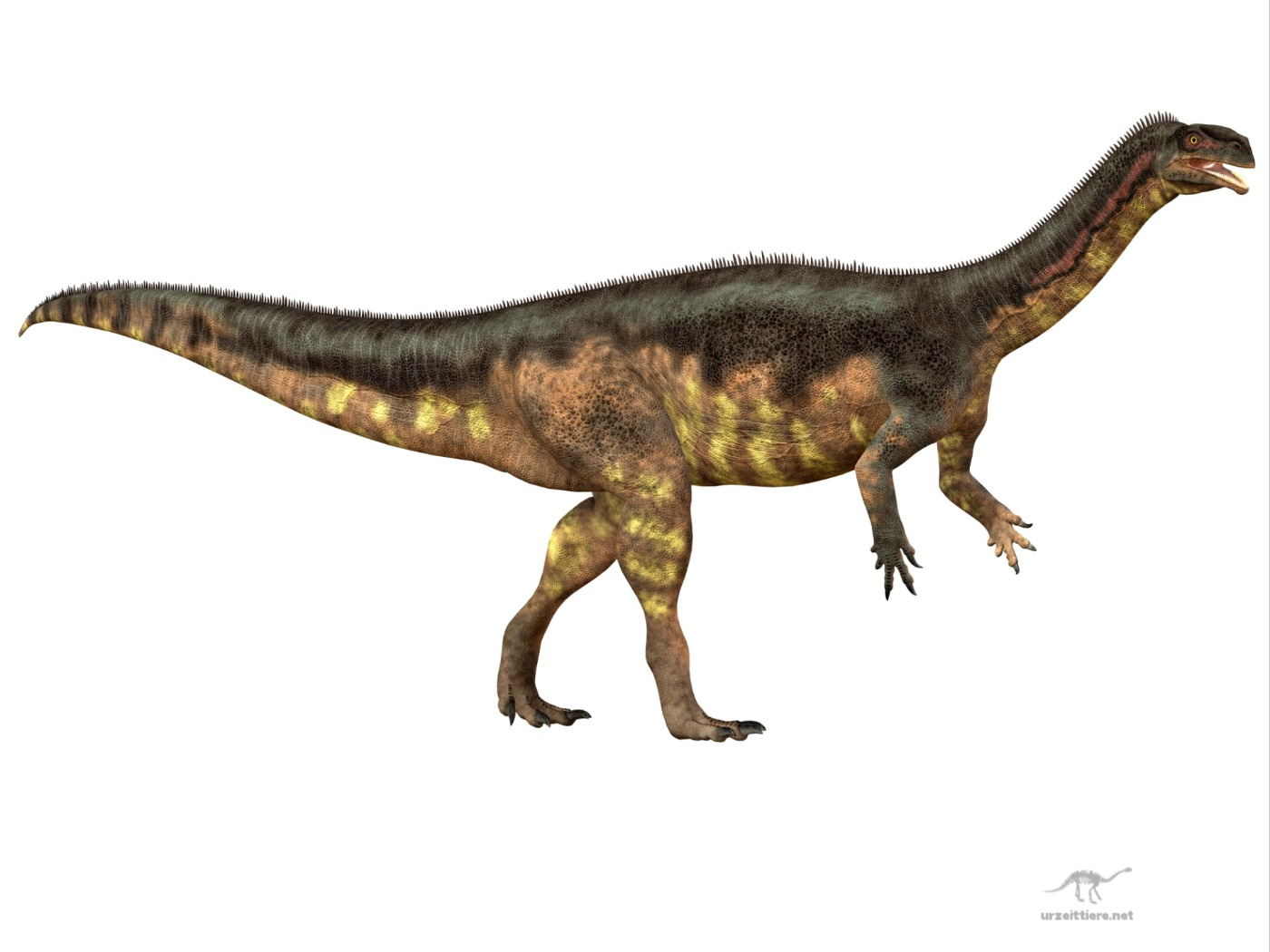
Plateosaurus was among the first dinosaurs to grow relatively large. Some specimens grew up to 10 meters long. It was a massive dinosaur with stocky and thick bones. Its hind legs were more powerfully developed than its front legs, which were also strong. Plateosaurus could stand up on its hind legs to reach higher hanging food. His mode of locomotion is called digitigrad (toe walker). Thus he was a fast bipedal runner. But he was also able to move on all fours.
| Profile | Plateosaurus |
|---|---|
| Prehistoric Era | Upper Triassic 217.4 to 201.3 million years |
| Order | Saurischia |
| Suborder | Sauropodomorpha |
| Family | Plateosauridae |
| Tribe | |
| Genus | Plateosaurus |
| Species | P. engelhardti (P. trossingensis) , P. gracilis, P. longiceps |
| Height | 2.3 meter |
| Length | 4.8 to 10 meter |
| Weight | 600 kg to 4 tons |
| Territory | Central Europe |
Plateosaurus had a long and flexible neck. The small skull contained flat teeth serrated at the anterior and posterior margins.
It lived in the late Triassic period about 229 million to 200 million years ago in Europe.
Plateosaurs were representative of the prosauropods. The giant sauropods of later epochs could have descended from this group.
This is because no fossils of plateosaurs are known from the early Jurassic (200 million to 176 million years ago). Instead, the "real" large sauropods appear during this period.
Plateosaurus is one of the most common dinosaur fossils found in Europe. More than 50 sites are known in Europe. So far, more than 100 individuals have been excavated.
It was already discovered in 1834 by Johann Friedrich Engelhardt and in 1837 for the first time described and also named (Plateosaurus engelhardti) by the German paleontologist Hermann von Meyer. To German: "Breitweg Echse".
To reach high hanging vegetation such as conifers or cycads, he was able to stand up on his hind legs.
Its sharp teeth probably allowed it to tear the tough leaves from the plants with ease.
Based on the tough plant material that Plateosaurus ingested, paleontologists suspect that it swallowed small stones called gastroliths. These gizzard stones helped him crush food.
He possessed hands with 5 fingers and a large thumb claw. This possibly served for defense or for food intake.
It lived in an arid, almost desert-like climate in what is now Europe.
Based on the locations of the fossils, it is believed that Plateosaurus lived in herds. Presumably, it seasonally roamed the landscape in search of food.
Image sorce: Dropzink, modified my FunkMonk and Dinoguy2Vector version byGYassineMrabetTalk✉ This W3C-unspecified vector image was created with Inkscape., CC BY 3.0 https://creativecommons.org/licenses/by/3.0, via Wikimedia Commons
Plateosaurus Skelton: FunkMonk, CC BY-SA 3.0 https://creativecommons.org/licenses/by-sa/3.0, via Wikimedia Commons